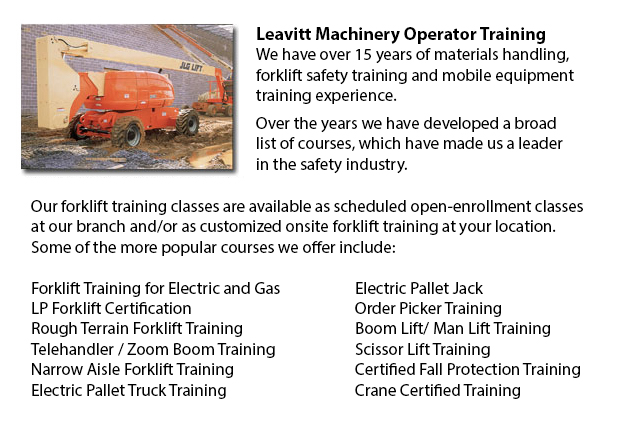
Aerial Lift Certification Oakville - Aerial Lift Certification is for personnel who need a thorough knowledge of aerial lift safety. Maintenance workers, construction craftsmen and supervisors need this training to ensure that inspectors and operators are qualified. Federal, provincial and state rules need companies to be certified in order to carry out in-house aerial lift inspections.
Regardless of differences in the type of work being done, all workers who perform tasks at elevated levels generally make use of the same means to access the required height. Aerial lifts and scissor lifts are the mechanized machines used to lift employees and equipment to elevated places.
Bucket trucks known as Cherry Pickers are aerial platforms that feature a bucket and supported boom. The primary hazard to using this particular type of platform is often falls, electrocutions, and tip overs. Certification ensures that workers who use aerial lifts are properly trained in order to safely operate the machine. Training also ensures that workers know how to maintain aerial work platforms based on the instructions of the manufacturer.
Training includes the following lifts: Vehicle-mounted aerial lifts, Boom-supported aerial lifts and scissors lifts. Trainees will gain an understanding of the causes and results of aerial lift accidents, and would learn safe operating procedures. They will become technically competent in the various types of aerial lifts, as well as components and terms. From interpreting rated capacity charts to selecting the right aerial lift for the task, the certification program would provide employees with all that they should know to safely carry out their work.
People who are assigned the task of inspecting aerial lift devices need to know how to inspect gears, booms, operating mechanisms, structural components, control systems and functions, braking systems, power plants, pins and shafts, attachments, electric and pneumatic components, hydraulic, operator aids and emergency safety devices, and that. Training would consist of the following: the role of the inspector in lessening accidents and liability exposure; monthly and annual check; how to perform a pre-use; how to write inspection reports; how to interpret and apply regulations regarding aerial lift safety standards; inspection procedures, checklists and techniques; complying with record keeping requirements; understanding and applying the three levels of aerial lift inspection; and when to remove defective aerial lifts from service.
-
Order Picker License Oakville
Order Picker License Oakville - Order preparation operation or order picking as it is more normally known is a method used within warehouse operations and consists of employees called order pickers. The order picker's task is to collect and take arti... More -
Forklift Operator Certification Oakville
Forklift Operator Certification Oakville - Forklift operator certification is normally needed for personnel working within industrial, warehouse or construction setting to guarantee the safe utilization of forklifts. Workplace training need to follow... More -
Scissor Lift Certification Oakville
Scissor Lift Certification Oakville - A lot of worksites and tradespeople like iron workers, welders and masons utilize scissor lift platforms to help them reach elevated work areas. The utilization of a scissor lift is usually secondary to their tra... More -
Forklift Training Courses Oakville
Forklift Training Courses Oakville - When forklift operator safety training is customized for illiteracy, training time is reduced by 50%. Train the trainer, forklift training certification and lift-truck operator driver safety training evaluation pr... More -
Manlift Training Oakville
Manlift Training Oakville - There are numerous manlift training programs which offer a review of the manlift machinery. The practicum portion of the training is one more vital portion of the course. In this section the trainee has chance to demonstra... More -
Boom Lift License Oakville
Boom Lift License Oakville - To operate an aerial boom lift, operators should be licensed through training that can be obtained utilizing both classroom sessions and practical training and by attaining a boom lift license. Instruction should be given... More -
Crane / Overhead Crane / Self-Erect Crane / Truck Mounted Crane / Hydraulic Cranes Training in Oakville
Bridge cranes or likewise called overhead cranes are actually a type of industrial material handling crane using a line and hook mechanism that runs on a horizontal beam running along two widely separated rails. Several overhead cranes could be seen... More -
Telehandler Training in Oakville
Telescopic handlers normally called telehandlers for short, are an extremely popular piece of heavy construction machinery. They are widely utilized in the construction and agricultural trades. These machines have maximum reaching ability and could g... More

Forklift Training Oakville
TOLL FREE: 1-888-254-6157
Oakville, Ontario
forklifttrainingoakville.com
Email Us
About Us


